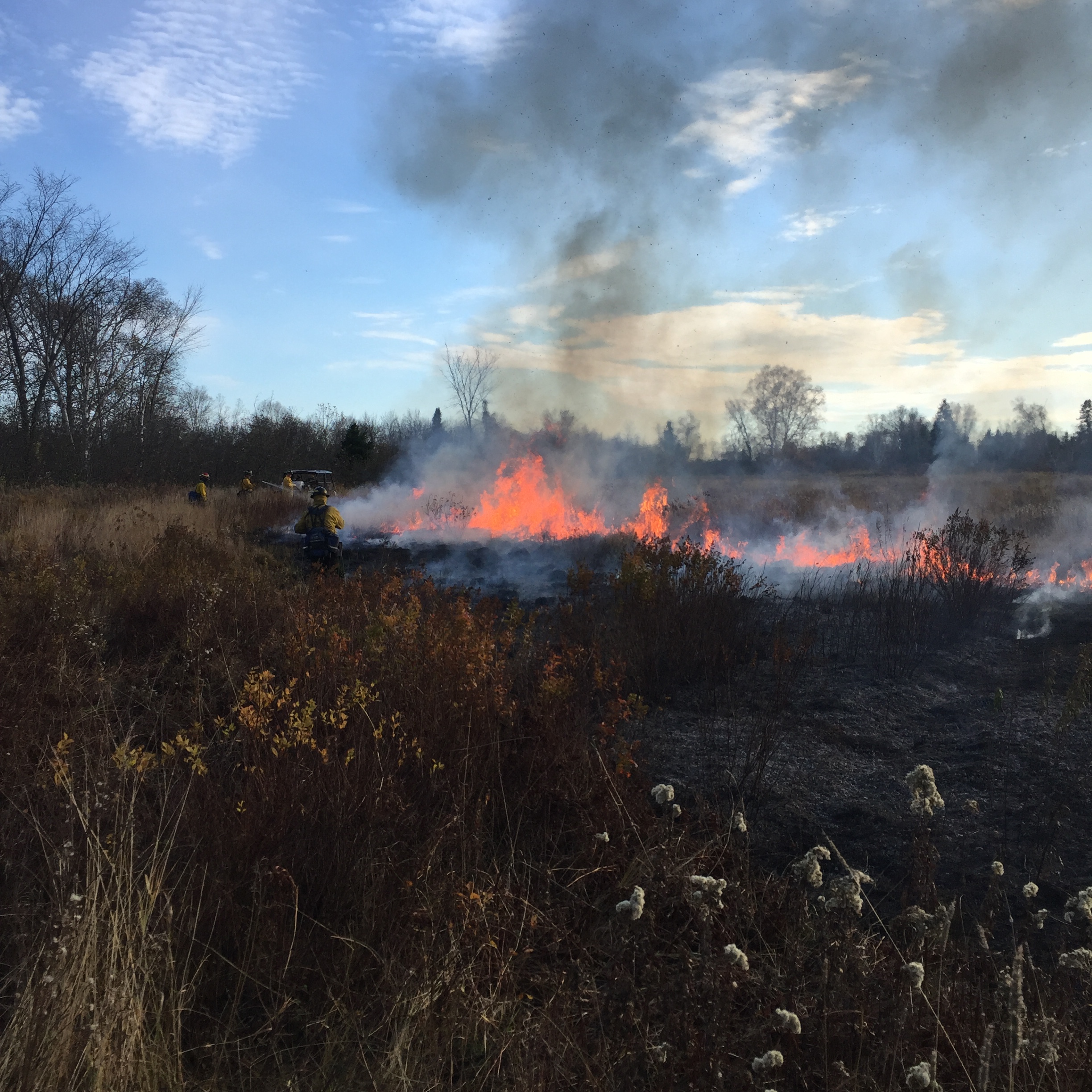
In an effort to help grassland bird species at several sites around the Aroostook River, Maine wildlife biologists are trying a new tool — prescribed burns that mimic small, natural wildfires.
On Oct. 22 and 23, the Maine Department of Inland Fisheries and Wildlife and the Maine Forest Service set fires and controlled them on more than 30 acres of grassland at the Pollard Flats and Butler Island wildlife management areas in Masardis and Ashland.
“It’s sort of new for us as a department,” said Amanda DeMusz, assistant regional biologist with IF&W in Ashland.
More commonly used in other Northeast states to combat invasive plant species, prescribed fires could be a good way to help regenerate some of Maine’s grassland ecosystems, DeMusz said. Prescribed fires “are a proven tool that have been done in other places in the Northeast,” she said.
This October was the first time IF&W has held prescribed fires in northern Maine, and the technique is relatively new to Maine overall, the biologist said. It’s been used for a number of years in the Kennebunk Plains wildlife management area and this spring was first used on Swan Island in Richmond.
One of the main goals of the northern Maine fires was to improve the habitat for grassland bird species such as the savannah sparrow, killdeer, meadowlark, grasshopper sparrow, American kestrel and northern carrier, DeMusz said.
The two wildlife management parcels — totalling more than 300 acres — were acquired by IF&W more than 15 years ago. The Butler Island field was previously used for growing potatoes and grains, while the Pollard fields were used for hay.
The fields were allowed to grow up naturally in meadow species and have been mowed about once a year, DeMusz said.
Conducting a controlled fire helps the regeneration of the grasslands in the birds’ favor, she said.
“Instead of just mowing, the advantage of burning is it can remove a lot of the ground litter that builds up. Over time that litter can impede on birds ability to forage and escape predators,” she said.
The Maine Forest Service handled the logistics of the burn — starting the fires and controlling them — while IF&W is overseeing the ecological observations, DeMusz said.
“We’ll be doing monitoring and bird surveys and setting up nesting boxes for kestrels and swallows,” she said, adding that they’ll also determine a multi-year plan for future controlled burns.
“Our goal is also to demonstrate this as another tool to use for managing wildlife.”







